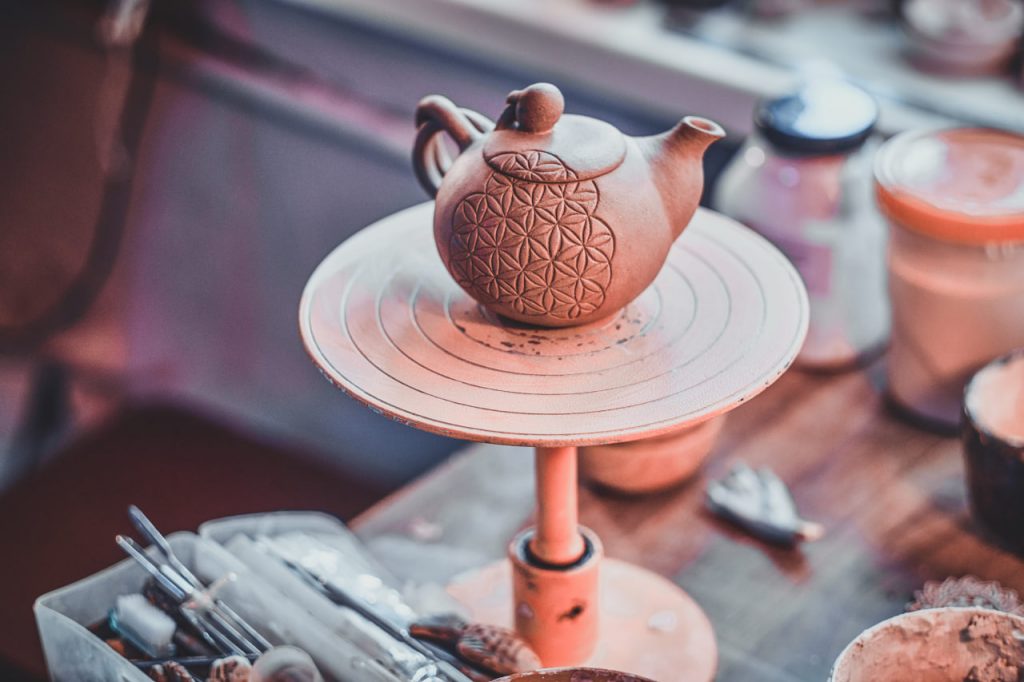While wheel throwing is often the first thing that comes to mind when people think of pottery, hand-building is one of the oldest and most versatile techniques in ceramic art. This method allows for complete creative freedom, as you shape and construct your pottery piece by piece, using only your hands and a few simple tools. Whether you’re a beginner or an experienced potter, hand-building offers endless opportunities for artistic exploration.
The Three Core Hand-Building Techniques
Unlike wheel throwing, which relies on the spinning motion of the wheel to shape clay, hand-building techniques involve manually forming the clay into different shapes. The three primary methods are pinch pottery, coil building, and slab construction.
1. Pinch Pottery: Sculpting with Your Hands
Pinch pottery is one of the most basic and intuitive ways to create ceramic pieces. It begins with a simple ball of clay, which you gradually shape into a pot, cup, or bowl by pinching the walls with your fingers.
Why Pinch Pottery is Great for Beginners:
- Requires no tools other than your hands.
- Helps develop a feel for clay and its flexibility.
- Encourages a direct, personal connection with the material.
To create a pinch pot, start by rolling a ball of clay about the size of your palm. Press your thumb into the center to create an indentation, then use your fingers to gently pinch and thin out the walls. The more even and consistent your pinching, the smoother and more symmetrical your piece will become.
Advanced potters use this method to create more sculptural and organic forms, incorporating texture, carving, and surface decoration for unique results.
2. Coil Building: Creating Forms with Coiled Clay
Coil building is one of the most ancient pottery techniques, dating back thousands of years to civilizations that used it to create large storage vessels. This method involves rolling out long, snake-like coils of clay and stacking them to build up the walls of a piece.
Steps to Coil Building:
- Roll out even coils of clay, about the thickness of a pencil.
- Place the first coil onto a flat base, pressing it gently to attach.
- Continue stacking coils, smoothing the edges to bind them together.
- Shape the structure as you go, curving or expanding the form as desired.
Coil pottery allows for great flexibility in design. You can leave the coils visible for a decorative effect, or smooth them out for a more polished look. Artists often use this method to create large, sculptural pieces that would be difficult to achieve on a wheel.
3. Slab Construction: Pottery with Flat Sheets of Clay
Slab construction is perfect for creating geometric, angular, or architectural forms. This technique involves rolling out flat sheets of clay and cutting them into shapes, which are then assembled like puzzle pieces. It’s commonly used for making plates, boxes, tiles, and more sculptural works.
Steps to Slab Building:
- Roll out a smooth, even slab using a rolling pin or slab roller.
- Cut out your desired shapes using a template or freehand cutting.
- Score (scratch) the edges that will be joined together and apply slip (liquid clay) to bond them.
- Carefully attach the pieces and refine the edges for a seamless connection.
Slab building opens the door to countless creative possibilities. You can texture the clay before assembling, carve patterns, or even press in leaves, fabrics, or stamps to create interesting surface designs.
The Beauty of Hand-Built Pottery
Hand-building gives you complete control over the form and surface of your pottery. Since it’s not limited by the constraints of a wheel, this method allows for a more sculptural and artistic approach. Whether you want to create functional pieces like mugs and vases or artistic sculptures, hand-building techniques make it possible.
Moreover, the process of working with clay by hand is deeply meditative. It requires patience and attentiveness, making it a rewarding creative outlet. The imperfections and organic textures that naturally come with hand-building add character and uniqueness to each piece, emphasizing the beauty of handmade artistry.
Combining Hand-Building Techniques
Many potters blend different hand-building techniques in a single piece. For example, you might use a slab for the base, coil for the walls, and pinch for decorative elements. The more you experiment, the more confident you’ll become in shaping clay to match your artistic vision.
Conclusion
Hand-building is a time-honored craft that allows for boundless creativity. Whether you’re crafting delicate pinch pots, expressive coil-built sculptures, or precise slab-constructed forms, each piece carries a unique touch that reflects your style. Unlike mass-produced ceramics, hand-built pottery has a soul—it tells a story through the marks of your hands and the imperfections that make it one of a kind.
So, if you’re looking to explore pottery in a way that is free from the restrictions of the wheel, embrace the joy of hand-building. It’s a technique that connects us to the ancient traditions of pottery while offering limitless possibilities for modern artistic expression.

